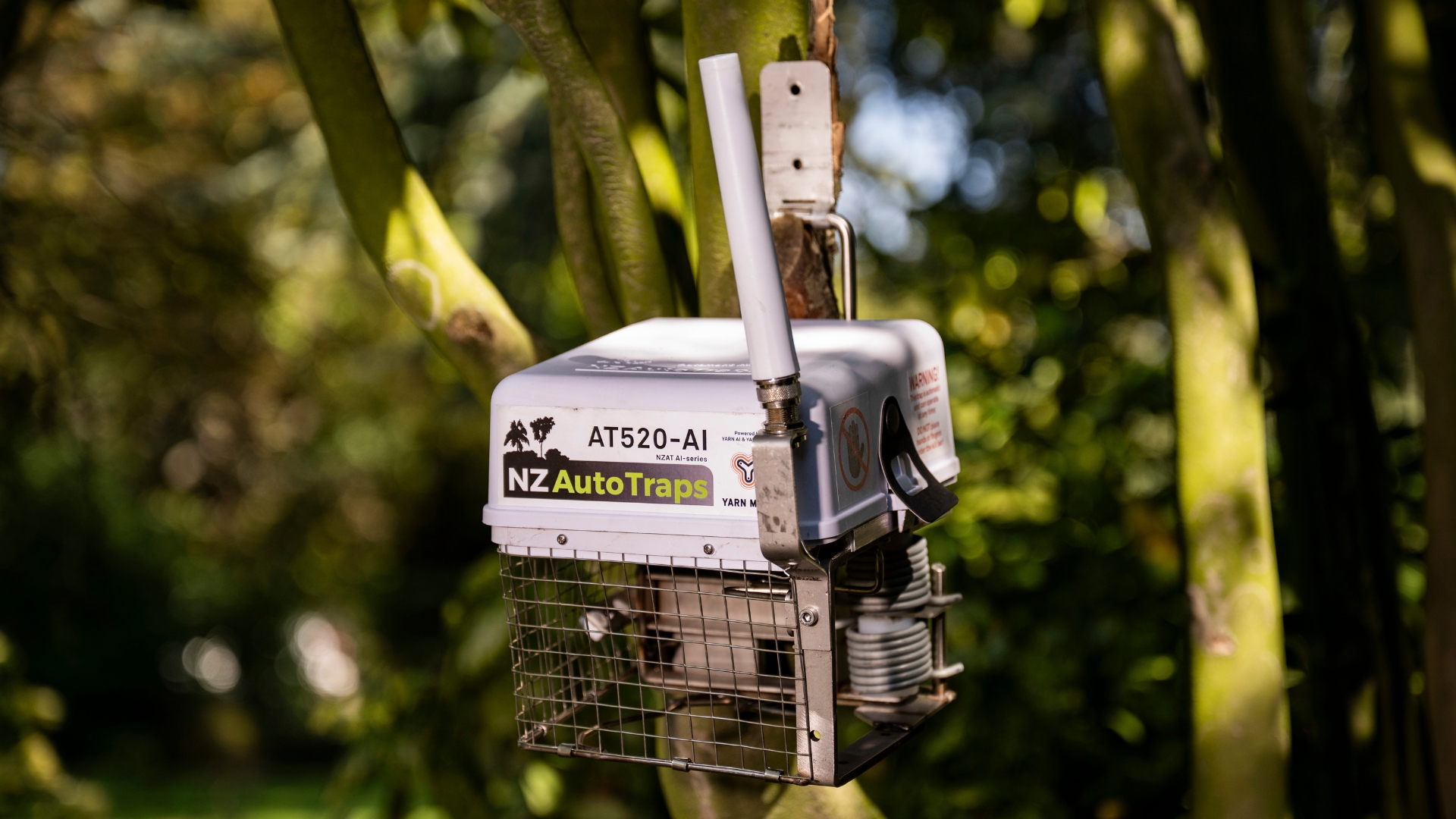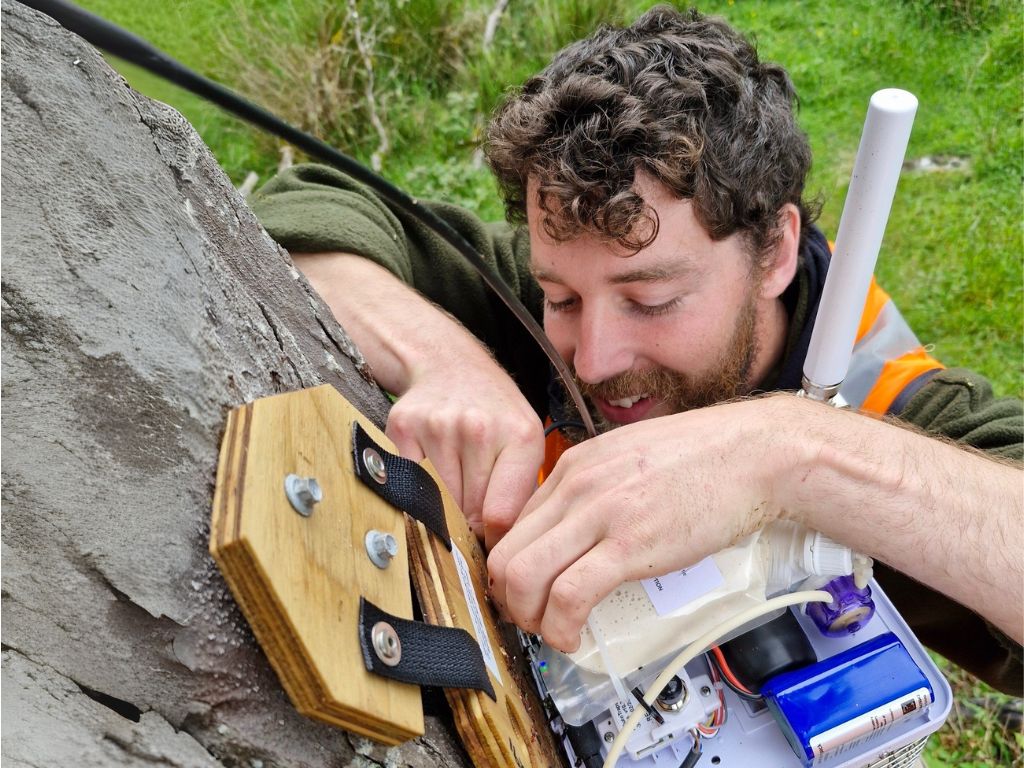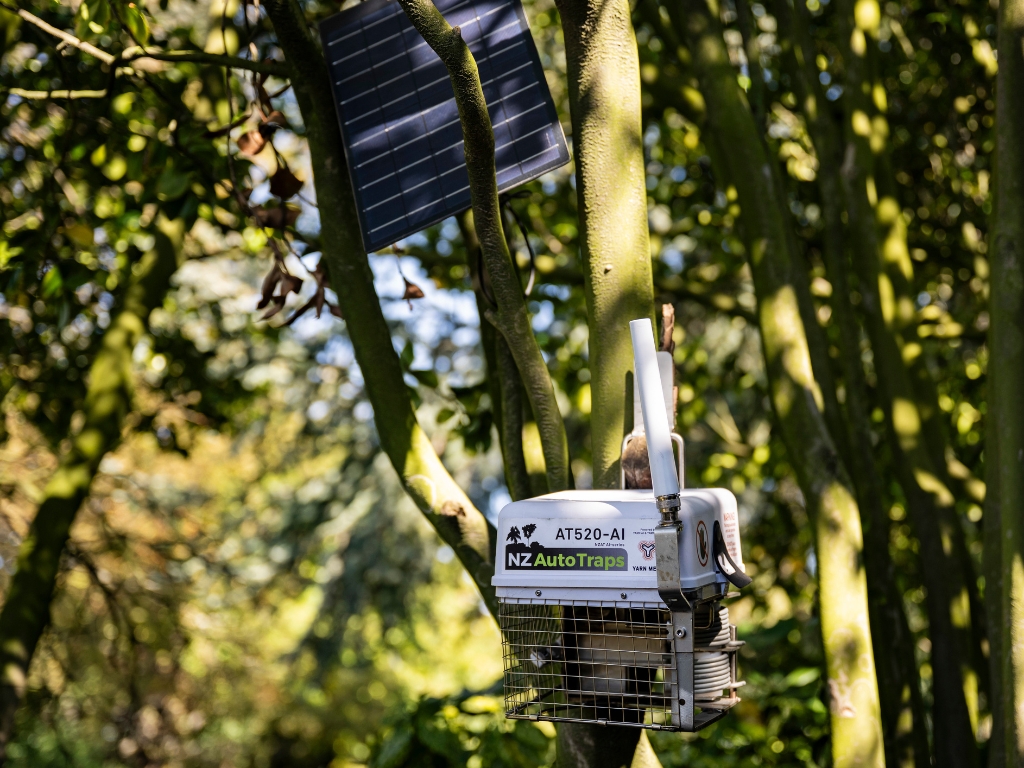Smart traps that recognise their targets, reset themselves and adapt to trap-evading predators are joining the predator free movement. And they can withstand the rugged, rain-drenched bush of the West Coast, dramatically reducing labour costs and time.

Damp, mountainous, windy – the West Coast’s Te Kinga has got to be one of the most challenging locations to set up electronic traps. But NZ Auto Trap’s new trap changes how trapping can be done in even rugged, remote regions.
The AT520-AI is solar-powered, armed with a camera and self-resetting. Crucially, it only triggers for target species, helping protect curious kea, kākā, weka and kiwi.
It’s a solar-powered trap, which means no need to recharge batteries. Using AI, the trap only arms when it gets a positive ID on an introduced predator. Its camera can also be used for monitoring, firing images back to base on everything it detects. The wireless sensor mesh technology provides reliable remote communications. And importantly, it’s super durable for long-term use outdoors in the unruly Aotearoa elements.
Arming the West Coast
Predator Free Te Kinga initially sought a surveillance tool to help it determine where to focus its possum control efforts. The Predator Free 2050 Ltd. funded project aims to completely remove possums from 3,700 hectares of Mt Te Kinga as part of a wider programme around the Lake Brunner Basin.
The camera – and its ability to identify species – first attracted them to the AT520-AI.
High rainfall, gnarly winds, and the odd lightning strike up Te Kinga “make almost every electronic thing not weatherproof,” explains Predator Free Te Kinga project lead Sue Davies.
They weren’t sure how well the traps would communicate from deep ravines, and the dense, shadowy bush made the project uncertain how the solar-powered traps would cope.

“If it works here, it’s probably going to be able to work just about anywhere”, Sue says.
So far, they’re so impressed with the trap’s results that they’re ordering more.
“The trap side of it has actually surpassed our expectations,” explains operations coordinator Conor Downes.
“Just last night, we had two rats in an AT520-AI, four hours apart… It can reset straight away, rather than our team heading in to service them on foot in hard-to-reach areas, which happens up to every three weeks at best, three months at worst.”
Locking out kea and weka

A standout feature of this trap is its ability to use AI to recognise which species puts its head in the trap.
Te Kinga’s proximity to Aurthur’s Pass brings it within kea territory. Kea are notorious for messing with traps, sometimes to their detriment, so the team rigorously tested the new traps for their safety. They put out unarmed traps monitored with trail cameras for a year. There were no interactions.
By default, the trap only arms if it identifies a target species, like a possum or rat, with 80% certainty. A second layer of protection locks off the whole trap for a specified period if it identifies something like a kea or weka.
Ironing out the kinks
But even the smartest traps have their quirks. One challenge is balancing the technology with practicality: where the signal for remote communications is strongest isn’t always the best spot to attract predators.
“The ideal would be placing traps where the animals are and having the technology work in that spot. At the moment, it’s like, ‘This spot’s real good’, but you have to move 20 meters to get a connection,” Conor explains. He’s confident that technology will keep improving. In future, that will probably look like smaller, more efficient relays.
The relay posts also pose a challenge when it comes to lightning strikes. “We’ve had one destroyed, and now we put a piece of rebar higher, within a few meters, so any strike defaults to that,” Sue said.
The updates that will pump out pests’ dream meal
One of the most exciting aspects of these traps is not what they can do now but what they will do in future.
Later this year, a software update will instruct nearby traps to pump out extra lure if a possum is detected nearby but doesn’t enter a trap.
A separate hardware update will eventually put three different lures on each trap. AI will help determine which lure to pump out based on the species identified nearby.
There’s also work on using audio to attract target species.
Haydn Steel, operations manager at NZ Autotraps, explains that these updates are aimed at times when pest numbers fall, and trapping becomes more challenging when only the wiliest animals are left.

These updates should mean the traps can attract pests from further away, meaning fewer have to be purchased.
The goal is to retrofit updates to existing traps, such as those on the cliff faces of Te Kinga.
“No one’s got heaps of money; we’re all scrapping for the dollar. So rather than seeing our trap become obsolete, we try and upgrade it,” Steel said.
Making it all add up

The cost of these traps is steep, at $1030 each.
But Predator Free Te Kinga crunched the numbers — the traps offer significant cost reductions.
Instead of helicoptering in staff who then walk five hours to service a trap that may have caught something months ago, the traps can be left for six months before they might need a service.
During that time, they are catching and re-luring continuously.

